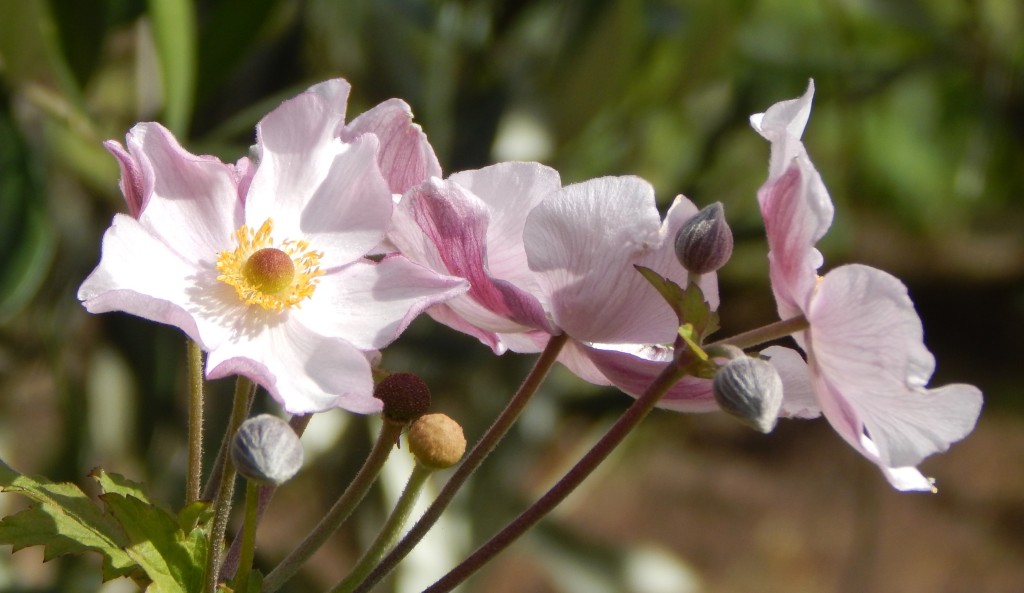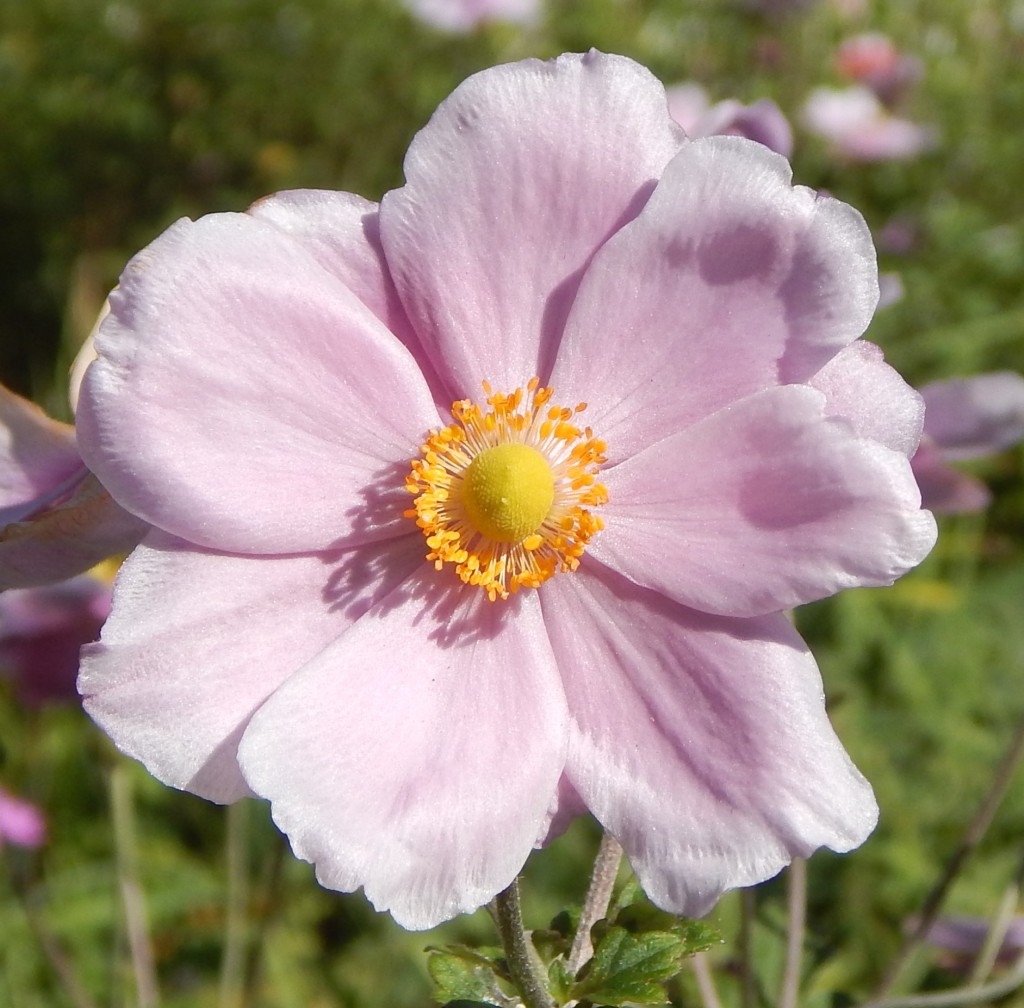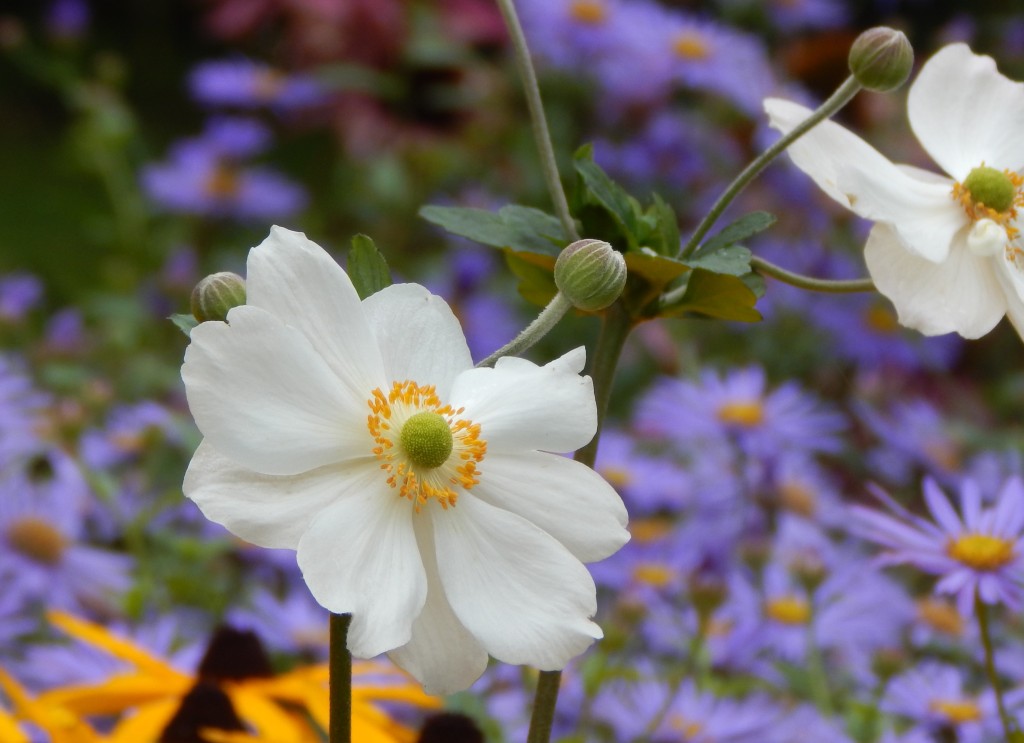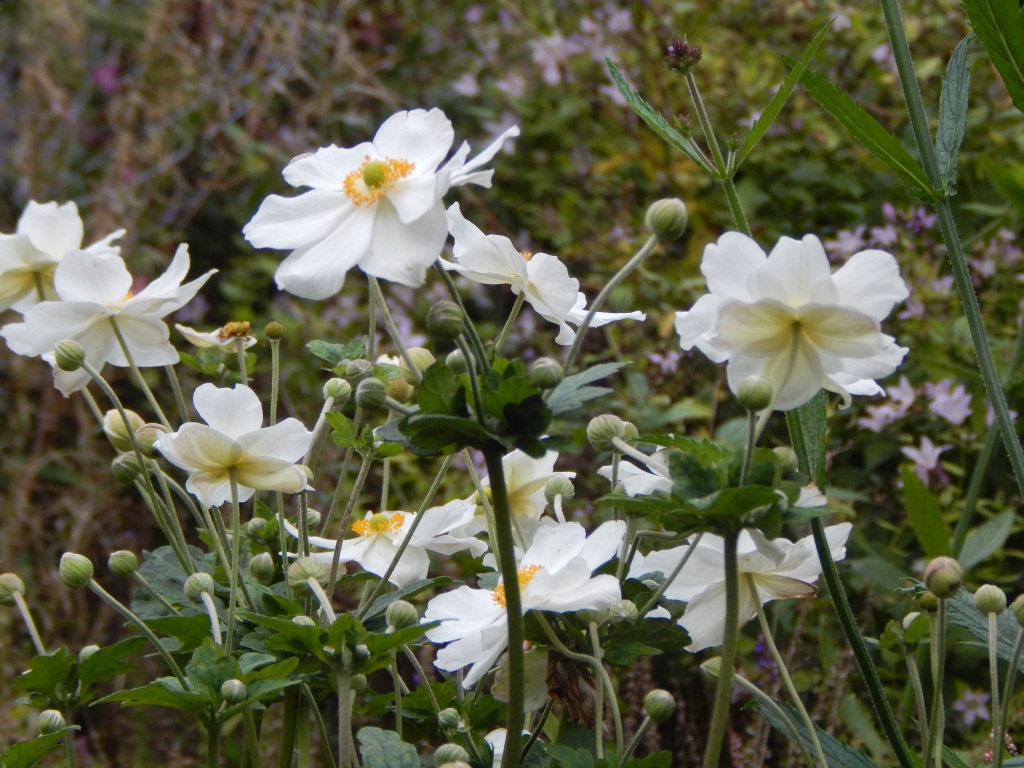
[025] Anemone hupehensis, Hubei Anemone
Introduction
Anemone hupehensis, the Hubei Anemone, is a common garden plant, native to China but widely grown and naturalized in Japan.
It is also known as the Chinese Anemone, Japanese Anemone, or sometimes as thimbleweed or windflower.
Its large open flowers are generally white or light pink.
Taxonomy
Kingdom – Plants
Division – Vascular Plants
Class – Flowering Plants
Order – Ranunculales
Family – Ranunculaceae
Genus – Anemone
Scientific Name – Anemone hupehensis
Some varieties are hybridized with other species of Anemone.
Wikipedia lists only three cultivars and four hybrid cultivars.
Name
The Greek ‘Anemone’ means daughter of the wind. You won’t be surprised by a bit of Greek mythology so here it is, coming from the Metamorphoses of Ovid. The plant was created by the goddess Venus when she sprinkled nectar on the blood of her dead lover, Adonis. The name comes from the frailty of the petals that can be blown away by the wind. All anemones can be called windflowers.
If you are familiar with the complexities of transliterating Chinese you will understand the Latinization of the species name. Much as the city of Beijing used to be called Peking, the province of Hubei in central China can also be spelled Hupeh. (In both cases, the pronunciation is the same in Chinese, but not in English!)
Description
Anemones come within the buttercup family, Ranunculaceae, and there is a similarity in the shape of the flowers. The genus Anemone has about sixty members.
Flowers of Anemone hupehensis are large and flat with prominent yellow stamens.


Anemone hupehensis is a perennial, late flowering plant almost the size of a small shrub. It is often seen in spreading groups and can become like a hedge.
Habitat and use
This plant is only native to an area of Central China but has been cultivated in Japan for hundreds of years and has naturalized there.
I won’t provide cultivation notes for gardeners so I won’t always say a lot about garden plants.
Other Notes
I can understand why this plant can be invasive in some countries. I see it sometimes spreading outside gardens along the pavement and hedges.
See also
We won’t see any more anemones but there will be lots more garden plants. Don’t always expect more than a brief introduction and some pictures.


